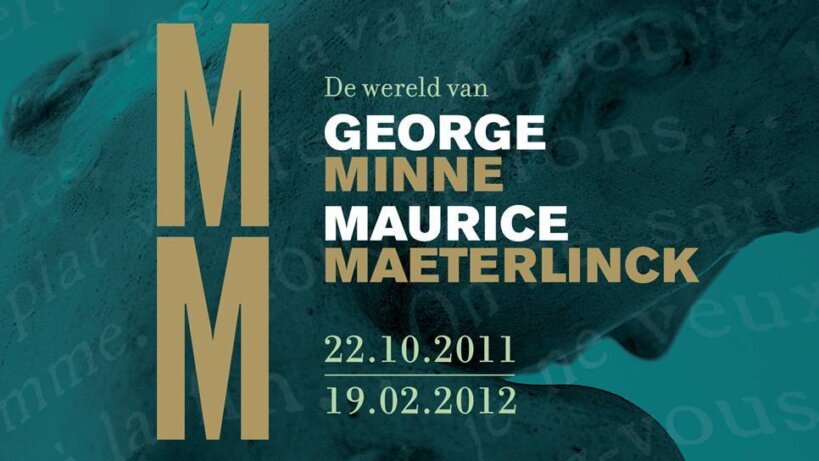In 2011 the City of Ghent commemorated the fact that the Nobel Prize for Literature was awarded to Maurice Maeterlinck on 22 October 1911. On this occasion, the Museum of Fine Arts Ghent organized an exhibition entitled ‘The World of Minne and Maeterlinck’. George Minne and Maurice Maeterlinck were ‘symmetrical spirits’, who were seen as innovators in their time in the international arts centres.
The exhibition in MSK wanted to highlight the work of two remarkable artists who were close friends and who would subsequently, each in their own field, exercise great influence on the European Symbolist movement. During their studies in Ghent, both George Minne and Maurice Maeterlinck were imbued with a similar appetite for life. Maeterlinck got to know the young Minne as 'a primitive almost, a wonderful minus habens'. He later would describe him as ‘the great portrayer of sorrow’. Minne, for his part, said that sometimes it was not clear whether he or Maurice Maeterlinck had come up with an idea given that they were such kindred spirits.
Tow contemporaries rejoined
The exhibition situated George Minne and Maurice Maeterlinck in their early years in the frame of Ghent’s social and artistic circles in the late nineteenth century, an environment that also left its mark on the poets Grégoire Le Roy, Georges Rodenbach and Karel Van de Woestijne. The exhibition then evolved in two directions. On the one hand, it discussed the relationship between Maurice Maeterlinck and the visual art of his era. Maeterlinck’s characteristic language was not only reflected in the output of the music and theatre world, but especially in the visual arts. This section included works by artists who have directly inspired Maeterlinck (such as Odilon Redon) and especially of artists who, in turn, were influenced by his ideas, poems and plays (including Fernand Khnopff, Maurice Denis and Léon Spilliaert).
The other part of the exhibition followed George Minne as he continued to hone his art. Minne moved to Brussels in 1895 and lived there until 1899, when he settled in Sint-Martens-Latem. During this period Minne would create the elegant sculptures which earned him such an important place in European Art Nouveau. He influenced such artists as Gustav Klimt and Oskar Kokoschka.
Thirty years after the last retrospective
This was the second time that the Ghent museum devoted an exhibition to George Minne. In 1982, the retrospective ‘George Minne and art around 1900’ brought about an international rehabilitation of this highly original sculptor. The exhibition incorporated new insights into the art of George Minne. Because both artists complete one another so beautifully, the Maeterlinck year in Ghent was an excellent opportunity to bring together a very specific selection of Symbolist works of art, inspired by the main themes in the work of George Minne and Maurice Maeterlinck.
